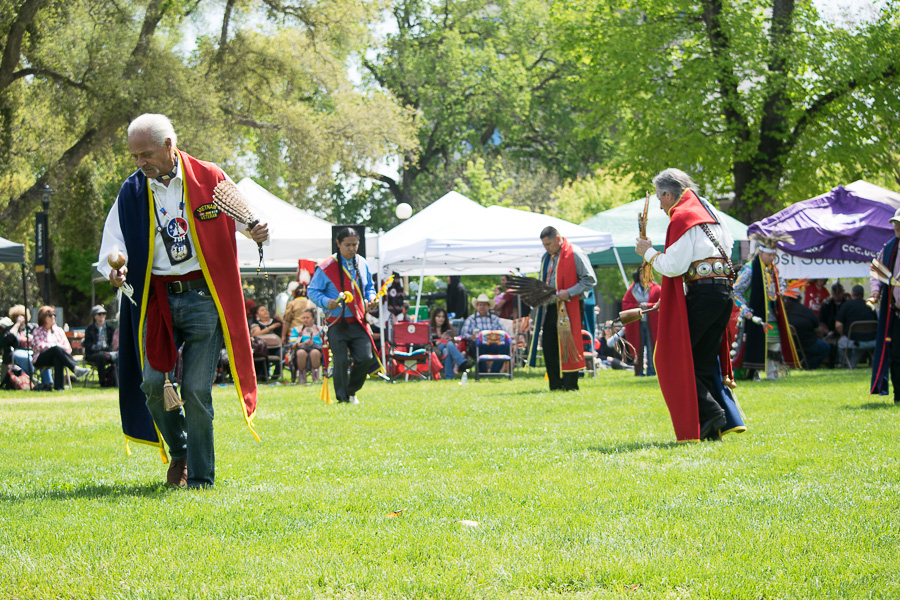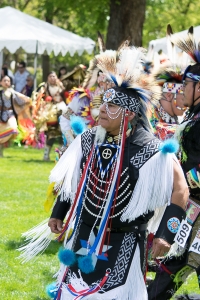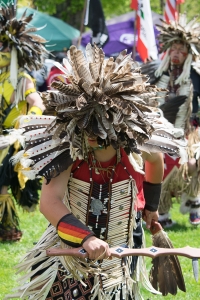
The struggles, triumphs of UC Davis’ Native American and Indigenous community
Accounting for just 0.9 percent of the UC Davis student body, Native American and Indigenous students form a small, tightly-knit community that is severely underrepresented despite being one of UC Davis’ most active student groups.
“Western education has always been used as a tool to suppress Indigenous populations,” said Jessa Rae Growing Thunder, a third-year Native American studies graduate student and member of the Fort Peck Assiniboine and Sioux tribes.
According to Growing Thunder, Native and Indigenous students live in the shadow of a dark history in which, throughout the twentieth century, Native American children were forcibly separated from their tribes and relocated to military-style boarding schools in order to “Kill the Indian and Save the Man” by assimilating them into American culture.
For Growing Thunder and the Native and Indigenous community at UC Davis, even just being in school means facing centuries of historical injustices committed against their people.
“Throughout these 500 years, I think that [these injustices] caused a lot of pain and trauma for people on so many different levels and I think it’s learning how to overcome that,” said Gabriela Martinez-Garcia, a third-year Native American studies major and member of the Purepecha tribe of Northwestern Michoacan.

However, not only must Indigenous students overcome the traumas that have been passed down over generations through western education, but these wrongdoings central to American history are often overlooked in school curricula.
“They’re not taught, they’re not acknowledged and I think that’s really hurtful because they grow up feeling inferior to society,” Martinez-Garcia said. “Why would they want to pursue a higher education if they’re inferior?”
Martinez-Garcia compared the resources available on campus to that of the community college she previously attended, College of Alameda.
“[Alameda] didn’t have all these resources, they didn’t have all these classes,” Martinez-Garcia said. “Over here, they have a lot more resources and they’re a lot more open-minded to new ideas, and I think that’s a good thing that Davis has because they’re able to go a bit above and beyond.”
The new Native American Student Success Center opened on April 10 has been a landmark advance in providing appropriate resources to Native and Indigenous students on campus.
“Before the center, it was harder to find those hubs where you can come together and talk about your experiences or how somebody was disrespectful to you because of who you are as an Indigenous person,” said Deserea Langley, a third-year Native American studies graduate student and a member of the Paiute Shoshone tribe from Susanville Indian Rancheria, a reservation located in Lassen County.

Desiree Negrette, a third-year psychology and Native American studies double major and a member of the Shoshone and Paiute tribes as well as a member of the Te-Moak Band of Western Shoshones of Nevada, added that many new faces have become visible in the community as a result of the center.
As an officer for five different Native American student groups, Negrette said that while she appreciates the resources offered to Native students, she sometimes finds that those within the Native American Studies Department can be isolated.
“We’re in the same jobs, the same clubs and […] it just feels like there’s a lack of support from administration and even a lot of professors,” Negrette said. “The Native American studies department here on campus is very welcoming and supportive but just outside of that it feels like we’re in a weird bubble. I feel like there a lot of people who don’t know that there is a Native community here on campus.”
Other Native and Indigenous students agree with Negrette, but believe that their visibility has increased with on campus events such as the Powwow hosted on April 15, the opening of the new center and especially the anti-Dakota Access Pipeline movement.
“The movement with Standing Rock wasn’t just a issue of tribal sovereignty, it wasn’t just an issue of social and environmental justice […] it was a movement for all humans,” Growing Thunder said. “We had so many student activists rise up and challenge capitalism, challenge the oil industry, and really engage in it as our future leaders. Because that’s what we’re doing here. Being at UC Davis is a big deal because we’re the next leaders of this country. Right now, more than ever, we need to be united. We need to support one another, no matter where we come from.”
Langley recalled how during the Standing Rock protests, the presidential election had spurred hate speech on campus, leading to graffiti on Hart Hall that read “Build A Wall.” She said that it was a representation of the type of negativity Native and Indigenous students face on a daily basis.
Langley and other Native and Indigenous students battle the pervasive stereotypes of their people daily, dispelling the common western conception that all Natives are akin to those in Disney’s Pocahontas in courses like NAS 1.
“A lot of times this is the first time people have ever left home and they’ve never taken a Native American studies [class] before,” Langley said. “You’re like, okay let’s talk about stereotypes and then you kind of have them look at you and you’re like, ‘Do I fit this representation? No, I don’t.’ I don’t live in a teepee, I don’t live on the rez. I’m not dressed up in like my buckskins or […] have my hair in braids all the time.”
Martinez-Garcia has been confronted similarly by peers, making her insecure about her Indigenous identity.
“When I come and tell them I’m Indigenous, then they’ll be like, […] ‘Do you still practice this tradition, do you still do this, do you still do that?’” Martinez-Garcia said. “People always want to question your authenticity, people want to sit there and question you, but sometimes it’s not really about [that]. You kind of feel who you are. You can’t keep questioning them and asking them why.”
Though its members come from a myriad of different backgrounds, tribes and knowledge of their culture’s traditions, the Native and Indigenous community unites over a common struggle to succeed against the odds of history, bearing the diverse experiences of their ancestors not only for themselves, their homes and their families, but for their entire communities.
“I don’t think my journey has been easy, but it’s been workable with the right amount of resources I’ve received,” Martinez-Garcia said. “But I think it’s all about acknowledging where you come from, taking your experiences and creating something that will benefit the future generations and something that will make you feel whole again.”
Written by: Kristen Leung — features@theaggie.org




